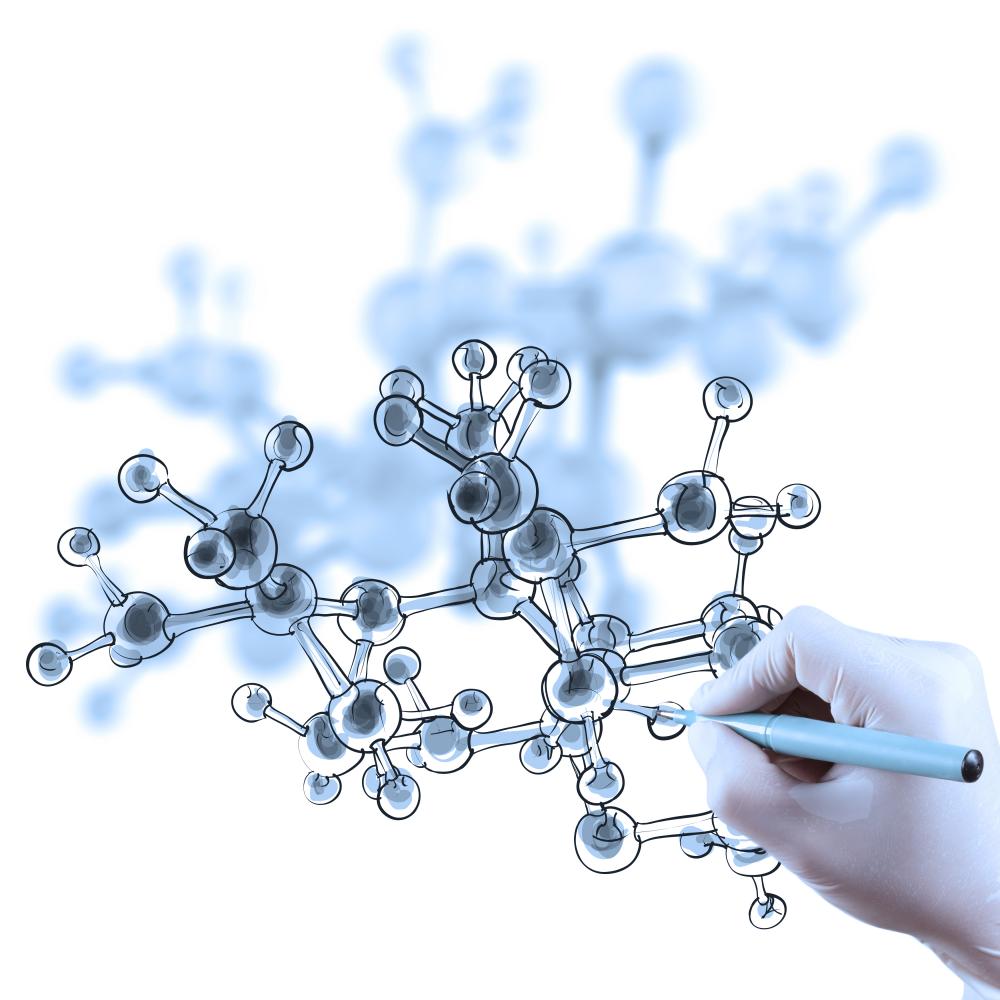




At Silver Fern Chemical, Inc, we’ve observed firsthand the growing demand for sustainability in the chemical industry. An eco-friendly solvent plays a crucial role in this shift, offering a viable pathway to greener manufacturing processes. These solvents are designed to reduce environmental impact, offering a safer alternative for the planet, our clients, and their end-users. But what makes a solvent eco-friendly? It boils down to its biodegradability, low toxicity, and minimal impact on the air quality. These attributes are essential in our selection criteria, ensuring we provide products that not only meet but exceed industry standards.
Through our extensive experience, we’ve identified that clients are increasingly seeking solvents that support their sustainability goals without compromising on performance. This balance is pivotal in sectors ranging from pharmaceuticals to household cleaning products. As a result, we’ve expanded our portfolio to include a variety of solvents that are not only effective but environmentally considerate. Our collaboration with leading chemical manufacturers globally allows us to source solvents that align with our commitment to eco-friendly practices.
Commitment to Sustainability
In navigating the complex landscape of chemical supply, Silver Fern Chemical, Inc places sustainability at the forefront of our operations. We recognize that the adoption of green chemistry principles is not just a trend but a necessary evolution. This approach ensures that the chemicals we distribute, including eco-friendly solvents, adhere to principles of safety, efficiency, and minimal environmental impact. Our dedication extends beyond just supplying eco-friendly solvents; it’s about fostering a culture of responsibility and innovation.
Our efforts to promote eco-friendly practices are reflected in our stringent selection process. We prioritize solvents that offer reduced environmental risks and are derived from renewable sources wherever possible. This meticulous approach ensures that our offerings contribute to safer chemical processes across various industries.
From the Lab to the Market
In our nearly two decades of service, we’ve witnessed the transformative power of eco-friendly solvents across a spectrum of applications. One area where their impact is particularly notable is in the production of personal care products. Here, the shift toward green solvents has enabled the creation of safer, more sustainable products that consumers can trust. By integrating eco-friendly solvents into the manufacturing process, our clients are able to reduce their environmental footprint while delivering high-quality goods.
Success Stories
One anecdote that stands out involves a client in the paint and coatings industry. Faced with strict environmental regulations and a competitive market, they turned to us for a solution. By adopting a solvent we recommended, known for its low VOC emissions and excellent solvency, they were able to not only comply with regulations but also improve their product’s performance. Stories like these underscore the tangible benefits of eco-friendly solvents in driving industry innovation while protecting the environment.
Challenges and Triumphs
Transitioning to eco-friendly solvents isn’t without its challenges–cost considerations, compatibility issues, and regulatory hurdles to name a few. However, through close collaboration with our clients and leveraging our global network, we’ve been able to overcome these obstacles. By sharing our knowledge and expertise, we help clients navigate these challenges, ensuring a smooth transition to greener alternatives.
The Future is Green
Looking ahead, the role of eco-friendly solvents in shaping a sustainable future cannot be overstated. At Silver Fern Chemical, Inc, we’re committed to staying at the forefront of this movement, continuously exploring new and innovative ways to support our clients’ sustainability goals. The journey towards greener chemical solutions is a collaborative one, and we’re here to guide our clients every step of the way.
Embracing technology is key to advancing the use of eco-friendly solvents. In our quest to provide cutting-edge solutions, we’ve invested in research and development efforts focused on identifying solvents that offer superior performance with minimal environmental impact. This involves not just looking at the solvents themselves, but also at how they interact with other substances and processes. Our aim is to offer solvents that are not only eco-friendly but also enhance the efficiency and quality of our clients’ products.
We believe that technological innovation will continue to play a significant role in the adoption of eco-friendly solvents. By staying informed about the latest developments and integrating them into our offerings, we can help our clients stay ahead of the curve. At Silver Fern Chemical, Inc, the future is green, and we’re excited to be part of this evolving landscape, offering eco-friendly solutions that benefit our clients, their customers, and the planet.

At Silver Fern Chemical, Inc, our expertise spans a vast array of industries, ensuring that our clients get not just a product, but a comprehensive solution to their chemical needs. A prime example of our versatile offerings is Dibasic Ester (DBE). This ester of a dicarboxylic acid finds its use in an impressive range of applications, from paints and coatings to adhesives and soil stabilization. Its non-flammable, biodegradable, and non-corrosive properties, coupled with a mild, fruity odor, make it an environmentally friendly choice for various industries.
Produced from short-chain acids such as adipic, glutaric, and succinic acid, DBE mixtures are a testament to the innovative approaches we champion here at Silver Fern Chemical. Whether the application requires methanol or higher molecular weight monoalcohols, Dibasic Ester flexibly fits the bill. It’s this adaptability, combined with its benign environmental impact, that sets Dibasic Ester apart as a preferred solution in our portfolio.
In my years of working with Dibasic Ester, I’ve witnessed firsthand its transformative impact on projects requiring solvents that balance performance with environmental stewardship. The discussion around Dibasic Ester isn’t just about its chemical properties but how it represents a shift towards more sustainable industrial practices.
Delving deeper into the applications of Dibasic Ester reveals its wide-ranging utility across several sectors. In the realm of paints and coatings, for instance, DBE’s effectiveness as a solvent and binder enhances product performance while ensuring compliance with stringent environmental regulations. This dual capability is something we, at Silver Fern Chemical, believe is crucial for the future of manufacturing and environmental conservation.
The usage doesn’t stop there. In agricultural settings, Dibasic Ester contributes to crop protection products, indicating its safety and effectiveness in sensitive applications. Moreover, its role in the production of adhesives showcases its versatility and capacity to improve product formulations. These examples barely scratch the surface of where and how Dibasic Ester can be utilized, underscoring its importance in our inventory.
Sustainable Solutions with Dibasic Ester
Our commitment at Silver Fern Chemical to sustainability is reflected in our promotion and distribution of products like Dibasic Ester. By providing an eco-friendly alternative to more traditional, potentially hazardous chemicals, we’re helping pave the way for greener industries. It’s not just about meeting current needs but ensuring the health of our planet for future generations.
Through nearly two decades of experience, we’ve learned that success lies in not just supplying chemicals but in offering solutions that align with the values and goals of our clients. Dibasic Ester embodies this philosophy, combining performance with environmental responsibility. It’s a clear example of how, in the right hands, chemistry can be a force for good.
In conclusion, Dibasic Ester is more than just a product in our catalog–it’s a symbol of our commitment to innovation, sustainability, and customer satisfaction. Whether it’s used in paint strippers or as a lubricant, its applications reflect the diversity of industries we serve and our dedication to providing high-quality, responsible chemical solutions.
At Silver Fern Chemical, Inc, our encounter with Dicarboxylic acid spans across various applications, highlighting its indispensability in multiple sectors. This organic compound, characterized by two carboxyl (-COOH) groups, serves as a cornerstone in the synthesis of polymers, resins, and an array of industrial chemicals. The versatility of Dicarboxylic acid is evident in its use, ranging from the manufacturing of nylon to its role in the production of adhesives, plasticizers, and even certain food additives.
One anecdote from our experience underscores the critical nature of Dicarboxylic acid in innovation. A client approached us with a challenging formulation issue in a high-performance lubricant. By incorporating a specific Dicarboxylic acid into the mix, we not only resolved the issue but also significantly enhanced the lubricant’s thermal stability and operational efficiency. This instance exemplifies the pivotal role of Dicarboxylic acids in advancing product performance and sustainability.
In Industry:
Dicarboxylic acid’s role in the industrial landscape is vast and multifaceted. It is the backbone of polyamide and polyester production, with adipic acid, a type of Dicarboxylic acid, being a principal ingredient in nylon manufacturing. The adaptability of Dicarboxylic acids allows them to be tailored for specific applications, fostering innovation in material science.
In the realm of eco-friendly initiatives, Dicarboxylic acids are at the forefront of developing sustainable solutions. For instance, sebacic acid, derived from castor oil, is integral in producing biodegradable plastics, illustrating the shift towards greener manufacturing processes.
In Food and Pharma:
Dicarboxylic acid plays a critical role in food and pharmaceutical industries, albeit in a more subtle manner. Aspartic and glutamic acids, two amino acids essential for human health, fall under the Dicarboxylic acid category. Their significance in metabolic processes and as flavor enhancers in foods demonstrates the biochemical importance of Dicarboxylic acids.
In our journey at Silver Fern Chemical, Inc, integrating Dicarboxylic acid into our solutions has been pivotal in achieving sustainable and high-performance products. The potential of Dicarboxylic acids to be derived from renewable resources marks a promising path towards eco-friendly chemical manufacturing. Our collaboration with clients to explore and implement biobased Dicarboxylic acids underscores our commitment to environmental stewardship.
As we look towards the future, the possibilities for leveraging Dicarboxylic acid in creating innovative, sustainable solutions are boundless. Our goal remains to harness the full potential of this versatile compound to meet the evolving demands of industries and consumers alike, staying true to our commitment to quality, sustainability, and excellence.
The quest for greener alternatives in chemical production is an ongoing journey. Dicarboxylic acid, with its broad spectrum of applications and potential for sustainable sourcing, remains a key player in this endeavor. At Silver Fern Chemical, Inc, we are poised to explore and expand the horizons of what’s possible with Dicarboxylic acid, contributing to a cleaner, greener planet.

At Silver Fern Chemical, Inc., we’ve been deeply involved in the journey towards greener chemical solutions. A green alternative solvent, in essence, is one that’s designed to minimize its environmental footprint. This means it’s biodegradable, has low toxicity, and does not contribute significantly to air or water pollution. For instance, we often suggest solvents derived from plant-based sources as they tick all these boxes while still delivering the high performance our clients expect in applications from pharmaceuticals to household cleaners. It’s about achieving that delicate balance between protecting our planet and ensuring our clients’ products are effective and safe.
Imagine, for a moment, a world where every manufacturing process uses solvents that are kind to our Earth without sacrificing quality. That’s the future we envision and are actively working towards with our range of eco-friendly solvents.
Determining the “best” green solvent is a bit like asking what the best tool in a toolbox is. The answer? It depends on the job. For us at Silver Fern Chemical, Inc., the best green solvent is one that perfectly aligns with our client’s needs while adhering to our strict criteria for sustainability and safety. For some, this might be Ethyl acetate, derived from ethanol, for its excellent solvency properties in coatings and adhesives. For others, Dibasic Ester or DBE, known for its eco-friendly profile and versatility, stands out, especially in applications requiring a biodegradable and low-toxicity solvent.
Our approach involves closely working with our clients to understand their specific requirements and then matching them with a solvent that not only meets but exceeds their sustainability objectives. It’s a collaborative journey towards greener solutions, each step tailored to the unique puzzle we’re solving together.
Renewable solvents represent a shift towards sustainability in the chemical industry. These are solvents derived from renewable resources, such as plant biomass, versus their non-renewable counterparts that come from petrochemical sources. At Silver Fern Chemical, Inc., we’re particularly excited about renewable solvents because they offer a way to reduce dependency on finite resources and decrease the carbon footprint associated with manufacturing.
Imagine a solvent that comes from the same earth it helps protect, embodying a cycle of renewal. That’s the essence of renewable solvents. Whether it’s ethanol made from sugar cane or solvents derived from citrus fruits, each represents a step towards more sustainable manufacturing practices, aligning with our commitment to not just meet but set industry standards for environmental responsibility.
The term “natural solvent” often conjures images of substances plucked directly from nature, ready to be used in all manner of applications. In reality, the most natural solvent would be water – it’s universally available, non-toxic, and incredibly versatile. However, when it comes to industrial applications, we need to expand our definition to include solvents that, while derived from natural sources, are refined or processed to meet specific needs.
At Silver Fern Chemical, Inc., we often highlight solvents like Ethyl lactate, produced from corn sugar, as prime examples of natural solvents. They’re derived from renewable sources and processed minimally, ensuring they retain their eco-friendly attributes while being effective in a wide range of applications. It’s about harnessing what nature offers in a way that respects our environmental commitments and meets our clients’ stringent requirements.
As we stand on the precipice of a new era in chemical manufacturing, one thing is clear: the future is unmistakably green. At Silver Fern Chemical, Inc., our mission extends beyond simply supplying eco-friendly solvents. It’s about being a trusted partner in our clients’ sustainability journeys, providing the expertise, products, and support they need to navigate the evolving landscape of environmental regulations and consumer expectations.
Whether it’s through advancing the use of Dibasic Ester in paints and coatings or exploring new applications for Dicarboxylic acids, we’re committed to innovation that doesn’t just follow trends but sets them. The path to a more sustainable future is laden with challenges, but with challenges come opportunities. Opportunities to redefine what’s possible, to turn visions of a greener tomorrow into reality. And at Silver Fern Chemical, Inc., we’re ready to lead the way, hand-in-hand with our clients and partners.